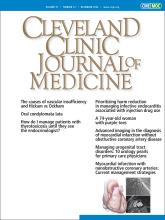We thank Ashley Lim for the comments on our review article.1 We are pleased that readers are interested in our review and appreciate the opportunity to discuss any concerns raised in the letter.
We agree that new therapies such as glucagon-like peptide-1 (GLP-1) receptor agonists and sodium-glucose cotransporter 2 inhibitors have significant value in achieving glycemic control to prevent diabetic retinopathy, and that GLP-1 receptor agonists have complex and unclear effects on the risk for diabetic retinopathy. Yet, several studies reported findings showing that sodium-glucose cotransporter 2 inhibitors are either not associated with a significantly increased risk of diabetic retinopathy or may even be linked to a significantly reduced risk, findings that seem to support their safety.2–6
However, as we discuss in the “Glucagon-like peptide-1 receptor agonists, rapid HbA1c reduction, and retinopathy” section of our review,1 there is mixed evidence on the effect of GLP-1 receptor agonists on the risk of diabetic retinopathy, with some meta-analyses and trials reporting an increased risk7–13 and others reporting no significant association between GLP-1 receptor agonists and risk for diabetic retinopathy or diabetic retinopathy progression.14–18 Consistent with the findings of Wai et al,19 the studies cited in our review that reported an increased risk of diabetic retinopathy observed an early rise in risk from 3 months to 3 years after patients started a GLP-1 receptor agonist.11
Because of the mixed results in the literature, further investigations on treatment methods that can drastically reduce hemoglobin A1c, such as specific types of GLP-1 receptor agonists, other pharmacologic therapies, and bariatric surgery, are necessary to elucidate the mechanism of potential early worsening of diabetic retinopathy and safe management of this complication of diabetes.
In clinical practice, it is important for clinicians to follow the American Diabetes Association screening recommendations20 for diabetic retinopathy and to consider referring patients to an ophthalmologist to assess retinopathy status when prescribing GLP-1 receptor agonists.
- Copyright © 2024 The Cleveland Clinic Foundation. All Rights Reserved.






